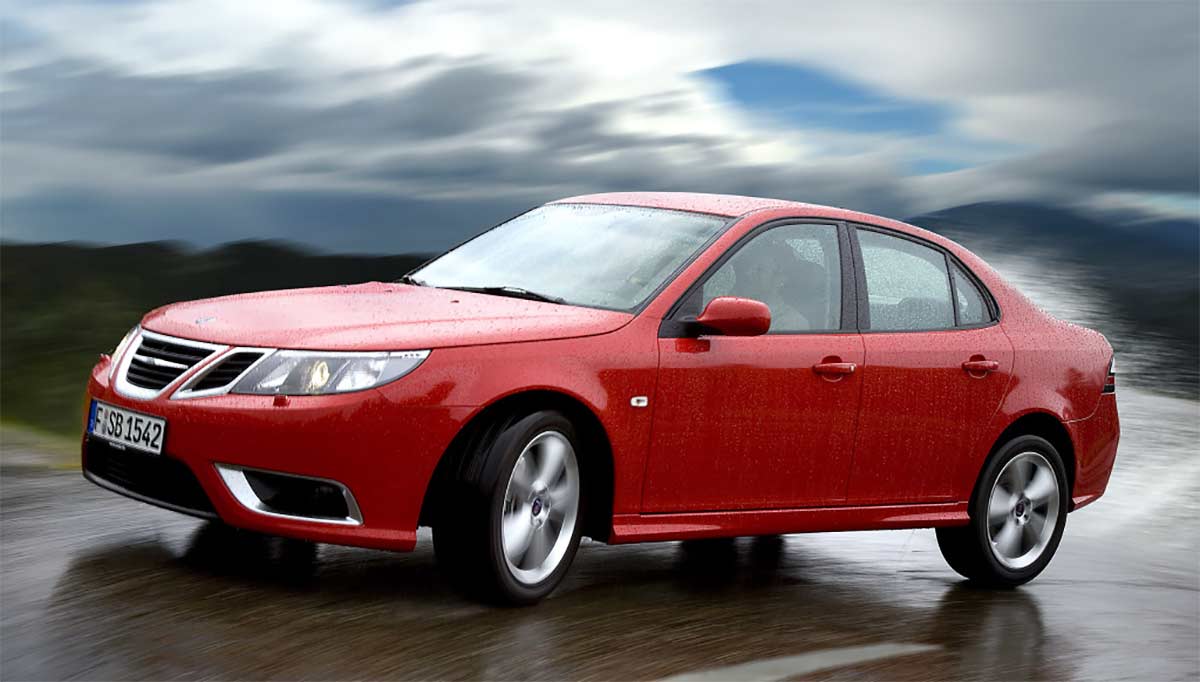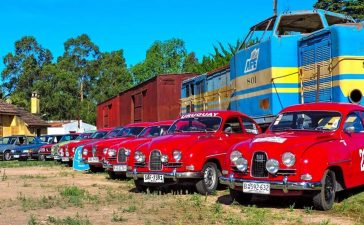We have already written a lot of questions about Saab cars and turbochargers, and the great role of the Saab company in increasing the spread and population of turbochargers in the automotive industry. Of course, it all started with the Saab 99 Turbo, but before that Turbo chargers were first introduced in a mass-produced passenger car in the early 1960s.
Table of Contents
Turbo Pioneers
The model was Chevrolet Corvair produced by General Motors – GM. The car had a bad reputation for having very poor low-speed performance, and the massive turbo lag made smooth driving virtually impossible in this car.
Turbo lag is what caused the car industry a big problem and prevented cars that used a turbocharger at that time from being declared practical. At that time, turbochargers were widely used in motor sports – starting with the iconic BMW 2002 turbo model and ending with “endurance” races and finally Formula 1 itself, but racing car drivers managed to cope with the rather unpleasant turbo engines from of that era, but it was not a solution for everyday driving and a normal driver. Turbines from that era were very large and heavy, so they were therefore very inert.
Next to the Saab 99 Turbo, Porsche was a pioneer when it comes to relatively practical turbo cars. In 1975, the 911 Turbo 3.0 model appeared, which used a solution that Porsche engineers came up with. The mechanism was based on the use of so-called “recirculating” hoses that allowed the turbine to spin before starting work, thus reducing lag. The 1978 Porsche 911 Turbo 3.3 model, which succeeded the 3.0 turbo model, introduced another innovation – an intercooler that further reduced lag and contributed to an increase in engine power.
How does a Turbocharger work?
After the story about Pinoir’s endeavors in the sphere of Turbochargers, let’s go back to the basics and see what exactly a turbocharger is and what it actually serves.
Engine power is proportional to the amount of air and fuel that can burn in the cylinder. Greater air flow through the engine provides more energy and therefore more power. In a turbo engine, the air is compressed before entering the cylinder. Since it is under high pressure, a large mass of air enters the cylinder, which leads to greater efficiency when burning fuel. This increases the engine’s power output, giving more power and speed compared to conventional naturally aspirated engines, and also reduces exhaust emissions.
Turbochargers are one of several systems for introducing additional air into the engine, i.e. they compress (reduce the volume) of the air entering the engine. The advantage of reducing the volume of air entering the engine through the intake manifold is that it allows the engine to have more air in the cylinder, and therefore more fuel is needed to create the proper mixture. By doing so, more power is extracted from each explosion within each cylinder of the engine. A turbocharged engine by definition produces more power than a non-turbocharged engine, and this significantly improves the engine’s power-to-weight ratio.
In order for turbochargers to achieve adequate compression, the turbocharger uses the engine’s exhaust gases to spin its turbine, which in turn accelerates the intake of air. The turbine of the turbocharger usually rotates between 80,000 and 200,000 rotations per minute, and as it is directly connected to the exhaust branch of the engine, the temperatures at which the turbine operates are very high.
How to increase engine power?
The easiest way to get more power from an engine is to increase the amount of air and fuel the engine can burn. One way is to increase the displacement either by increasing the displacement of the cylinders or by adding cylinders. If this method is not possible or profitable, a turbocharger is a simpler and more compact solution.
Turbochargers enable the engine to burn more fuel and air by compressing more fuel and air into the existing volume of the engine. The measure of compactness is in bars (metric system) or psi (colonial system – pounds per square inch).
1bar = 14,503 psi, i.e. 1psi = 0.068947 bar.
The typical pressure of turbines is usually around 6-8 psi, i.e. around 0.5 bar, which means that 50% more air is injected into the engine (1 bar is normal pressure, and when you add 0.5 bar of pressure with a turbo, you get 1.5 bar i.e. 50% pressure increase).
It is to be expected that the power will jump by 50%, however, the system is not 100% efficient, so the power increases are in the range of 30-40% depending on the construction. Part of the inefficiency stems from the fact that the air that drives the turbine is not “free”, i.e. the air that the turbine borrows from the engine’s exhaust manifold has its own price. The price is that the engine has to invest more energy to expel the air, since at the exit there is resistance to the turning of the turbine, which the expelled gas has to overcome.

Problems that occur with Turbochargers
Engine designers who decide to use turbochargers have several problems that they have to solve, and the success of the whole project depends on these solutions. And these are, first of all, what to do with the excess pressure created by the turbocharger, then how to reduce Turbo-lag, and whether to opt for a small or large turbocharger for a particular engine.
A sure way to reduce the inertia of the turbine and air compressor is to make the turbocharger as small as possible. A small turbocharger will provide pressure much faster at lower engine speeds, but will not be able to provide enough pressure when the engine revs and needs large amounts of air to maintain the required pressure. An additional danger is that the small turbine can spin too fast at high engine speeds, which can lead to its damage.
What is a Turbo Wastegate?
A large turbocharger can provide high pressure at high engine speeds, but it is heavy and inert and needs more time to accelerate its heavy turbine and air compressor. If the turbocharger creates too much pressure, one of the solutions is to use a valve for releasing excess air, popularly called a wastegate.
What does a turbo wastegate do?
To prevent turbocharger failure, some turbochargers have a westegate or turbine relief valve installed. This allows that when the pressure reaches the maximum allowed value, the valve opens which allows the excess exhaust gases to “bypass” the turbine and go straight into the exhaust system.
Wastegate valves can be pressure, vacuum or electric. They are also divided into internal and external according to the method of installation. The internal wastegate valves are an integral part of the turbines, while the external wastegate is installed independently of the turbine on the exhaust branch of the engine.
But in addition to the wastegate, another solution for pressure relief is the creation of a low-pressure turbocharger (LPT), where SAAB is one of the pioneers in the introduction of this technology.
SAAB Light Pressure Turbo (LPT)
Saab, as a pioneer in the field of using turbochargers, used LPT in mass production for the first time in 1992, when it presented the then new Saab 9000 2.3l Turbo Ecopower model. That engine had only 170 HP, i.e. 20 HP more than the identical engine without a turbocharger, and 30 HP less than the standard 2.3l Turbo engine (with a “big” turbo-charger).
While other manufacturers wanted as high a figure of power or torque as possible, Saab cleverly concluded that even though such an engine is weaker than the competition, with the help of a small turbo, the engine has a solid torque, which enables good acceleration, but is much easier to drive since the turbo lag is practically non-existent, and the response to gas pedal pressure is the same as with atmospheric engines.
Due to the better torque curve, Saab lengthened the gear ratio, thus additionally managing to reduce fuel consumption and reduce it to less than an atmospheric engine of the same size.
Saab 9-3 Turbo
Currently, the most represented Saab on the roads around the world is still the Saab 9-3 of the second generation, where only one engine does not have a turbocharger, the Saab 9-3 1.8i, while all other gasoline and diesel engines have a turbocharger installed. The 1.8i was the first non-turbo Saab to be offered in, say, the UK, and it used a normally aspirated 1.8-litre engine taken from the Vauxhall-Opel range.
The turbochargers in all these versions of the Saab motor are reliable and long-lasting, but like everything on Saab cars, they require regular service and the use of only engine oil according to the given specification.












1.8i was also available in Scandinavian countries, especially in Finland where high automobile taxation made turbo models more expensive.
Only available with manual five speed gearbox the car wasn’t a “rocket” but still very pleasant to drive if you rev it up enough. Because the car had “only” 122 hp, 167 Nm in order to make it accelerate a bit quicker the gearbox ratio was quite awkward and while driving on a motorway the revs were already at 2 500 rpm.